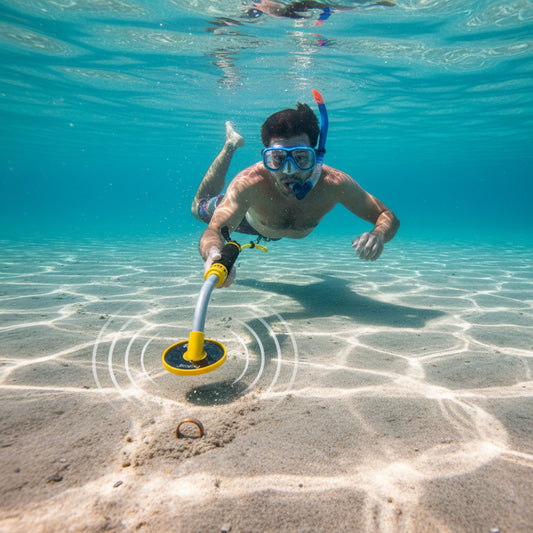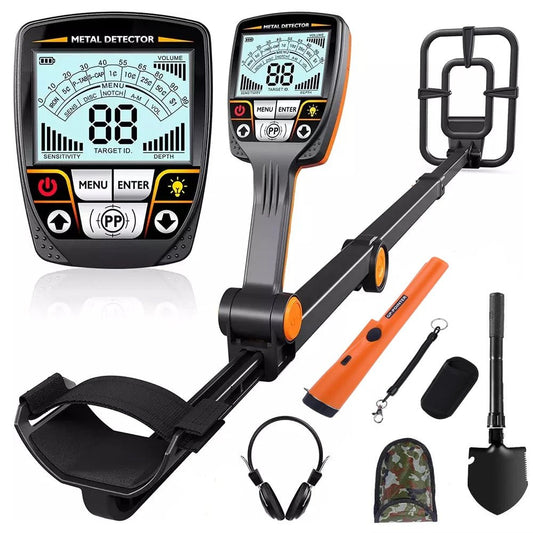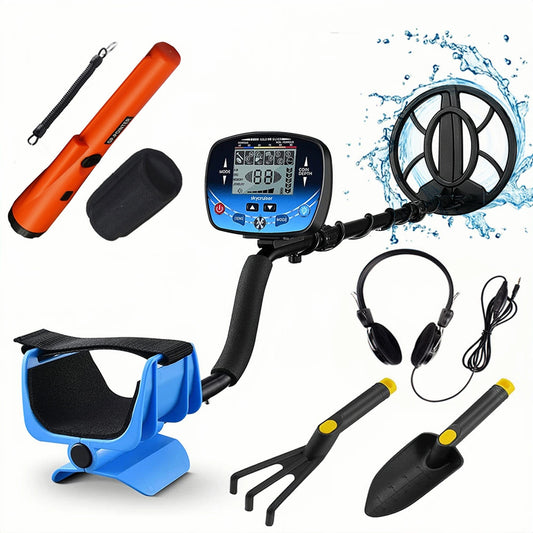
Metal Detecting in Madagascar: Pirate Coves and Hidden Treasures
Share
Madagascar, the world’s fourth-largest island, is a legendary land for treasure hunters. Its history as a pirate haven, especially in the 17th and 18th centuries, has inspired countless tales of hidden riches, sunken ships, and secret coves.
Today, metal detecting in Madagascar offers a unique adventure—if you know where to look and how to respect the island’s laws and heritage.
Madagascar: The Pirate’s Playground
Madagascar was once a notorious pirate stronghold, attracting infamous figures like Captain William Kidd and Adam Baldridge. The island’s secluded coves, fresh water, and proximity to Indian Ocean trade routes made it the perfect base for pirates seeking both refuge and opportunity.

Nosy Boraha (Ile Sainte-Marie): The Heart of Pirate Lore
Nosy Boraha, formerly known as Ile Sainte-Marie, is the epicenter of Madagascar’s pirate history. In the 17th and 18th centuries, it was home to more than a thousand pirates. The island’s natural harbors and hidden inlets allowed pirates to repair ships, store plunder, and evade authorities. Today, Nosy Boraha is famous for its:
-
Pirate Graveyard: The only one of its kind in the world, with tombstones marked by skull and crossbones.
-
Legend of Captain Kidd: The notorious Scottish pirate is believed to have sunk his ship, the Adventure Galley, off these shores. In 2015, divers recovered a 50kg silver bar from a wreck believed to be Kidd’s, fueling hopes of more treasure beneath the waves.
-
Local Folklore: Stories persist of buried treasure and secret stashes, drawing treasure hunters and history buffs from around the world.
Where to Metal Detect in Madagascar: Pirate Coves and Beyond

Pirate Coves and Shipwreck Sites
Nosy Boraha: The coves and beaches are prime spots for detecting, especially after storms or heavy tides. While much of the underwater treasure is the domain of archaeologists, beachcombers can still find coins, jewelry, and relics washed ashore.
Northern and Eastern Coastlines: These areas were frequented by pirates and traders, making them rich in lost artifacts and shipwreck debris.
Other Notable Sites

Royal Hill of Ambohimanga, could hide treasure in public proximities
Royal Hill of Ambohimanga: A UNESCO World Heritage Site and sacred royal city, this area is strictly off-limits for detecting but is a must-visit for history lovers.
Nosy Be Archipelago: Known for serene beaches and vibrant markets, Nosy Be offers opportunities for modern finds and the occasional relic.
Popular Beaches: Many of Madagascar’s beaches are relatively untouched by detectorists, increasing your chances of finding lost jewelry, coins, or even historical items.
Learn about all the best places to go metal detecting.
Legal and Ethical Considerations
Madagascar’s cultural heritage is protected by law, and strict regulations apply to archaeological sites and historical artifacts.
Key legal points:
-
No Detecting at Archaeological Sites: UNESCO World Heritage Sites, royal tombs, and protected parks are strictly off-limits for metal detecting.
-
Private Land: Always obtain permission from landowners before detecting.
-
Export Restrictions: Removing or exporting historical artifacts without permission is illegal.
-
Reporting Finds: If you discover something of historical or cultural significance, report it to local authorities or museums.
Best Practice: Focus on public beaches, coves, and areas not designated as protected or archaeological sites. Always fill your holes and remove any trash you find.
What Can You Find?

Metal detecting in Madagascar can yield a variety of treasures:
-
Modern Coins and Jewelry: Lost by tourists and locals on beaches and in markets.
-
Shipwreck Relics: Fragments of trade goods, coins, or metal objects from centuries-old wrecks, especially after storms.
-
Pirate Lore: While the odds of finding Captain Kidd’s treasure are slim, the thrill of searching in legendary pirate territory is unmatched.
-
Unique Artifacts: Buttons, buckles, and trade items occasionally surface, especially in areas with a history of settlement or trade.
Safety and Practical Tips

Stay Hydrated and Protected: The tropical sun and humidity can be intense. Bring water, sunscreen, and insect repellent.
Travel with a Guide: Madagascar’s remote areas can be challenging to navigate. Local guides can help you find the best spots and avoid protected zones.
Be Cautious in Remote Areas: Wildlife, tides, and rough terrain can pose risks. Always inform someone of your plans
Respect Local Customs: Malagasy people are proud of their heritage. Be friendly, explain your hobby, and respect local traditions.
Exploring Madagascar’s Hidden Treasures
Beyond metal detecting, Madagascar is home to stunning natural and cultural wonders:

-
Avenue of the Baobabs: Iconic, ancient trees and a must-see for photographers.
-
Tsingy de Bemaraha: Dramatic limestone formations and a UNESCO World Heritage Site.
-
Isalo National Park: Sandstone canyons, waterfalls, and endemic wildlife.
-
Markets and Villages: Local markets are great for finding unique souvenirs and learning about Malagasy culture.
Conclusion
Madagascar’s pirate coves, hidden beaches, and rich history make it a dream destination for adventurous metal detectorists. While strict laws protect archaeological sites, there are still plenty of opportunities to search for modern treasures and connect with the island’s legendary past. Always detect responsibly, respect local laws, and enjoy the thrill of hunting for hidden riches in one of the world’s most storied pirate havens.




